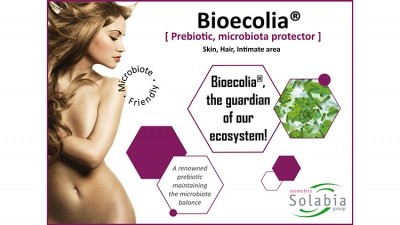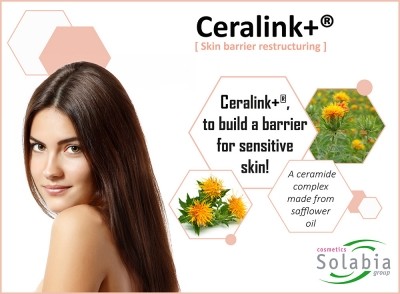Promotional Features
Exploring the skin microbiome: Review and innovative strategies to make your ecosystem happy!
Positioned as multifaceted with the external environment, our body is a complex ecosystem that lives in symbiosis with a multitude of microorganisms. It is undeniable that bacteria, viruses, archaea and fungi coexist in a very diverse habitat. Long regarded as a source of diseases and infections, the vast majority of microorganisms are beneficial and indispensable to biological processes, our health and the planet.
Ten trillion microorganisms live in each of us and shape the human microbiota. They play a fundamental role in the protection and control of the areas they colonize. To do this, they are continually in communication with our cells, generating metabolites that stimulate interactions between the various microbiome ‘stakeholders’. These microorganisms are present in different parts of the body in which an epithelium forms contact with the outside environment: the digestive tract, the skin, the respiratory tract, the urogenital tract and the eyes. The most "populous" organ is the digestive tract, which gathers 90% of microorganisms. The microbiota of the skin is the most complex and diverse of the human body, with very high variabilities unique to each individual.
Identification methods of microorganisms
Currently, bacteria are the most studied microorganisms on the human body. Their identification has traditionally been based on culture and counting methods of living colonies. This method is biased in favor of bacteria that can easily grow, as some of them have extremely complex food needs or are interdependent of other bacteria for their growth. The advent of molecular techniques, including bacterial 16S ribosomal RNA gene sequencing and metagenomic shotgun sequencing, has revealed a greater species diversity of the microbiota that lives with its host (Grogan et al. 2019). Thus, every place in our body represents a particular habitat with a different microbial composition.
Focus on the skin microbiota
In general, the skin has an acid pH and a dry environment. However, depending on the areas of the body, it has different physicochemical characteristics housing specific microbiota. The majority of skin bacteria belong to identified genera: Corynebacterium, present in wet areas at the fold of the elbow or between the toes; Cutibacterium is a genus found in the sebaceous areas of the face and the neck; and the genus Staphylococcus is preferentially located in the dry areas of our body such as the legs and forearms that are exposed to the external environment (Belkaid et al., 2014). On the other hand, it has been shown that the more the number of species is diversified, the higher the microbiome equilibrium.
Depending on their roles on our skin, these microbial populations are defined as symbiotic, commensal or pathogenic. Numerous endogenous and exogenous disturbances can be at the origin of the modification of the composition of the flora and affect the host-microorganisms relationship. Indeed, it has been shown that for humans, the genetic context, lifestyle and external environment influence the composition of the microbiota. The dysregulation of balance or "dysbiosis" then leads to an alteration of the immune response liable for excessive inflammation of the host, often leading to the appearance of various unfavorable pathologies (Duckney et al., 2013). It is therefore necessary to preserve the balance of the microbiota, which guarantees the well-being and health of our body.
Innate protection mechanisms
In order to maintain a balance between the beneficial microorganisms while repelling the potentially dangerous invaders, our body has put in place different strategies. First, there are competitive mechanisms between bacteria, both nutrient (competition for substrates) and geographic (for occupation of niches) (Krutmann, 2012). In addition, colonization of pathogenic bacteria is also regulated by the production of antimicrobial proteins and peptides (PAMs) secreted by keratinocytes and capable of controlling bacterial growth. Then, the composition of the bacterial flora is evaluated by Toll-like receptors (TLRs) II and IV present on the membrane of keratinocytes. The latter recognize the conserved molecular structures; lipopolysaccharide constituting the wall of Gram-negative bacteria and the peptidoglycan, the major constituent of the wall of Gram-positive bacteria. Thus, the defense of the host against microbial infections is initiated by the innate immune system which then triggers a sequence of events resulting in the phagocytosis of pathogens and simultaneously, the production of cytokines and chemokines, the activation of leukocytes and the initiation of adaptive immunity.
Strategies to help the skin protect itself
The skin microorganisms insure a genuine protective mission and participate in many physiological phenomena. In return, our body provides them all the necessary elements to their survival: open water, carbon, nitrogen sources and microelements. Nevertheless, in some cases of dysbiosis, it is necessary to help the body to restore a balance between microorganisms and their habitat.
Convinced of the existing interactions between our organism and microorganisms, Solabia Group has been fascinated for more than 30 years in research of skin flora and the maintenance of its balance on the skin surface. Specialized in the science of glycans, Solabia has thus developed its expertise over the years according to a three-step strategy.
1) Feeding the microbiota
Composed of a sequence of glucose units, prebiotics are the favorite substrate for feeding our body microorganisms. Obtained according to a patented method of enzyme biocatalysis from vegetable substrates, Bioecolia provides the source of carbon for most of the microorganisms and is very little metabolized by the pathogenic microorganisms of our ecosystem. This selectivity is due to the presence of specific connections that enable a faster and more efficient use of glucose by our flora, which then develops primarily. This competitive inhibition limits the development of pathogens responsible for dysbiosis. Thus, by acting globally on the microbiomes of skin, scalp and mucous membranes, Bioecolia is the guardian of our ecosystem.
2) Strengthening the skin natural defenses
With the interest of probiotics in nutrition, Solabia has continued its research and developed a symbiotic active ingredient, combining two prebiotic and two probiotic bacteria but in an inactivated form to obtain Ecoskin. In addition to the ability of the complex to interact on microbiota bio-selectively, the gluco-oligosaccharides and fructo-oligosaccharides (obtained after pressing the yacón tubers), have demonstrated stimulatory properties of the synthesis of antimicrobial peptides of types β-defensin 2 and β-defensin 3. By improving the appearance and comfort of the skin, Ecoskin enhances the radiance of the complexion and reduces the sensations of discomfort characteristic of sensitive and dry skin.
3) Investigating the communication mechanisms: microbe-to-microbe and microbe-to-skin
The colonization of the cutaneous area and mucous membranes uses adhesion factors associated with specialized structures present on the surface of the bacteria. These have the ability to bind to skin-specific receptors to limit the adhesion of pathogenic bacteria and the formation of biofilms. Teflose, a polysaccharide with a high concentration of rhamnose, a sugar having a specific affinity for epidermal cell receptors, was developed. This molecule then plays the role of a shield on the surface of the skin and thus reduces the resulting discomfort reactions. Ubiquitous because of its applications (soothing care, deodorant care, care of sensitive skin / atopic dermatitis, oily skin care, personal hygiene), Teflose can be combined with prebiotics, favoring the maintenance of the microbiota and shielding the implantation of pathogenic bacteria, especially if the ecosystem of the skin is weakened.
Perspectives and conclusion
The development of scientific knowledge about the role of the human microbiota has led to a change in the approach of the cosmetic industry. While only yesterday microorganisms were perceived negatively because they were considered as the cause of many diseases, today mentalities have changed. Henceforth, it is important to consider the microbiome as an integral part of the skin.
Many promising avenues remain to be explored and will undoubtedly change our approach to the skin and the ingredients we use to provide protection and to nurture its well-being. More than ever, Solabia Group’s specialization in enzymatic biocatalysis is part of this initiative thanks to its signature active ingredients: Bioecolia, Ecoskin and Teflose.
Finally, aware that the diversity of the body habitats offers a multitude of microbiomes, it is important to consider that of the scalp. Contact us to find out more about our new ingredient 2019 Saniscalp - Purifying and rebalancing scalp.





